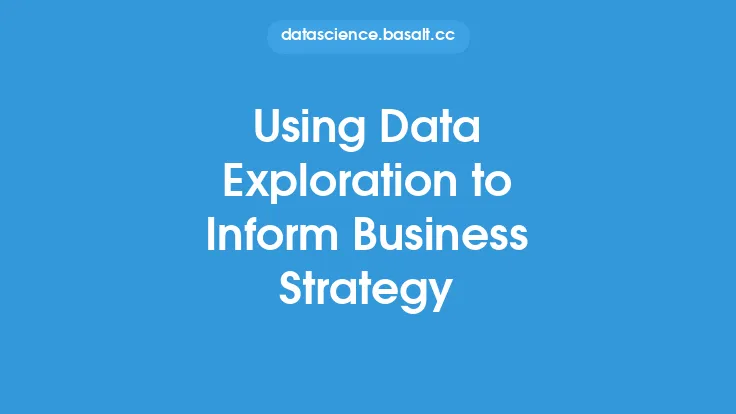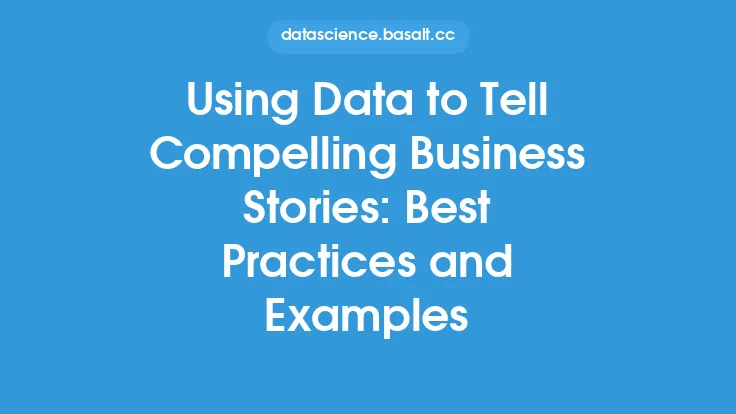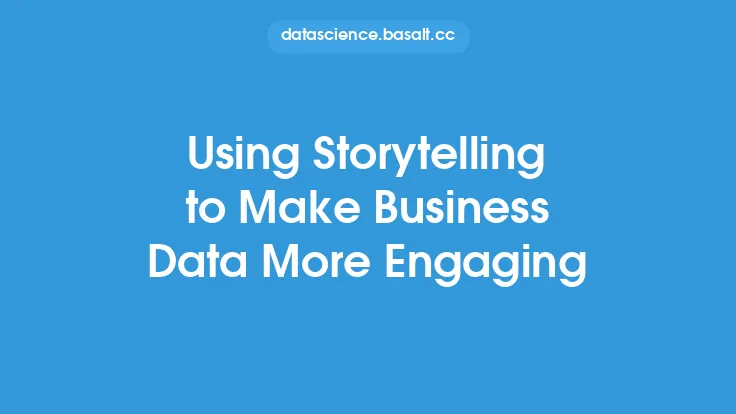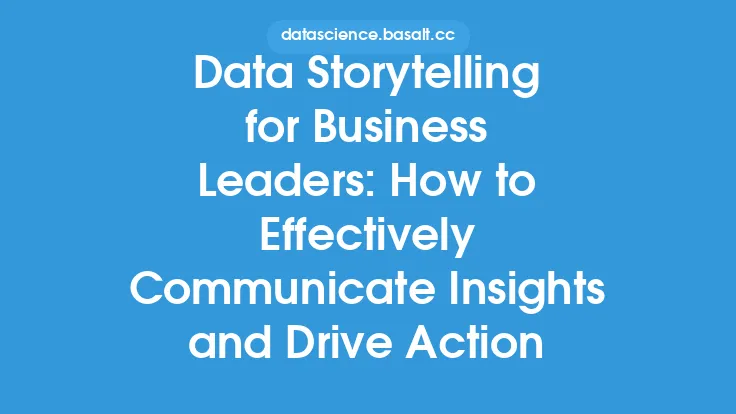In today's fast-paced and competitive business landscape, organizations are constantly seeking ways to gain a competitive edge and drive growth. One key strategy that has emerged as a crucial component of business success is the use of data to drive business outcomes. By leveraging data and analytics, companies can make informed decisions, optimize operations, and ultimately drive revenue and profitability. In this article, we will explore the concept of using data to drive business outcomes, including the benefits, challenges, and best practices for implementing a data-driven approach.
Introduction to Data-Driven Decision Making
Data-driven decision making is a process that involves using data and analytics to inform business decisions. This approach relies on the collection, analysis, and interpretation of data to identify trends, patterns, and insights that can inform strategic decisions. By using data to drive decision making, organizations can reduce the risk of relying on intuition or anecdotal evidence, and instead make decisions that are grounded in facts and evidence. Data-driven decision making is a key component of data storytelling, which involves using data and analytics to tell a story and convey insights that can inform business decisions.
Benefits of Using Data to Drive Business Outcomes
There are numerous benefits to using data to drive business outcomes. Some of the most significant advantages include:
- Improved decision making: By using data and analytics, organizations can make informed decisions that are grounded in facts and evidence.
- Increased efficiency: Data can help organizations identify areas of inefficiency and optimize operations to reduce waste and improve productivity.
- Enhanced customer experience: Data can provide insights into customer behavior and preferences, allowing organizations to tailor their products and services to meet customer needs.
- Competitive advantage: Organizations that use data to drive business outcomes can gain a competitive edge by making informed decisions and optimizing operations.
- Revenue growth: By using data to drive business outcomes, organizations can identify new opportunities for revenue growth and optimize their operations to maximize profitability.
Challenges of Using Data to Drive Business Outcomes
While using data to drive business outcomes can have numerous benefits, there are also several challenges that organizations may face. Some of the most significant challenges include:
- Data quality: Poor data quality can lead to inaccurate insights and informed decisions.
- Data integration: Integrating data from multiple sources can be a complex and time-consuming process.
- Data analysis: Analyzing large datasets can be a challenging task, requiring specialized skills and expertise.
- Cultural barriers: Implementing a data-driven approach can require significant cultural changes, including a shift towards a more analytical and evidence-based decision-making process.
- Technology: Implementing a data-driven approach can require significant investments in technology, including data management platforms, analytics tools, and data visualization software.
Best Practices for Using Data to Drive Business Outcomes
To overcome the challenges of using data to drive business outcomes, organizations can follow several best practices. Some of the most effective strategies include:
- Developing a data-driven culture: Encouraging a culture that values data and analytics can help organizations make informed decisions and drive business outcomes.
- Investing in data management: Implementing a robust data management platform can help organizations integrate and analyze data from multiple sources.
- Building a skilled analytics team: Hiring skilled analysts and data scientists can help organizations analyze complex datasets and identify insights that can inform business decisions.
- Using data visualization: Data visualization tools can help organizations communicate complex data insights to non-technical stakeholders and drive business outcomes.
- Continuously monitoring and evaluating: Continuously monitoring and evaluating the effectiveness of data-driven initiatives can help organizations refine their approach and drive ongoing improvement.
Technical Considerations for Using Data to Drive Business Outcomes
From a technical perspective, using data to drive business outcomes requires a range of skills and expertise. Some of the key technical considerations include:
- Data architecture: Designing a robust data architecture that can integrate and analyze data from multiple sources is critical for driving business outcomes.
- Data engineering: Building a skilled data engineering team that can design and implement data pipelines and architectures is essential for driving business outcomes.
- Machine learning: Implementing machine learning algorithms and models can help organizations identify complex patterns and insights in large datasets.
- Cloud computing: Leveraging cloud computing platforms can provide organizations with the scalability and flexibility they need to analyze large datasets and drive business outcomes.
- Data governance: Implementing a robust data governance framework can help organizations ensure data quality, security, and compliance.
Real-World Examples of Using Data to Drive Business Outcomes
There are numerous real-world examples of organizations using data to drive business outcomes. Some of the most notable examples include:
- Retail organizations using data to optimize inventory management and improve supply chain efficiency.
- Financial institutions using data to identify credit risk and optimize lending decisions.
- Healthcare organizations using data to improve patient outcomes and optimize treatment protocols.
- Manufacturing organizations using data to optimize production processes and improve product quality.
- Marketing organizations using data to personalize customer experiences and optimize marketing campaigns.
Conclusion
Using data to drive business outcomes is a critical component of success in today's fast-paced and competitive business landscape. By leveraging data and analytics, organizations can make informed decisions, optimize operations, and drive revenue and profitability. While there are challenges to implementing a data-driven approach, organizations can overcome these challenges by following best practices, investing in technology, and building a skilled analytics team. As the use of data and analytics continues to evolve, it is likely that we will see even more innovative applications of data-driven decision making in the future.





